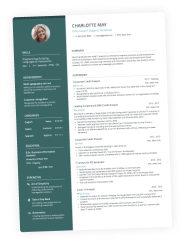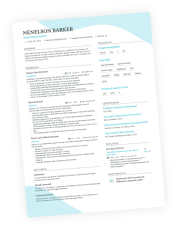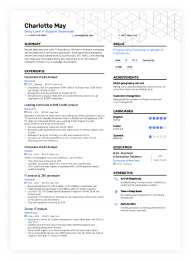Product manager interviews are among the toughest in tech—and for good reason. A PM is the strategic “mini-CEO” of a product, balancing user needs, business goals, and technical realities. These interviews aren’t about having the perfect answer but about showing how you think, prioritize, and make decisions under pressure.
In this guide, we’ll walk you through what to expect in a PM interview, the most common types of questions you’ll face, with strategies and sample answers for each.
Key takeaways
- Most PM interviews include three to four rounds covering product thinking, execution, leadership, and culture fit.
- Expect behavioral, product, strategy, and technical questions—all testing how you think and communicate.
- Keep your answers clear, authentic, and measurable.
- Ask thoughtful, targeted questions that show you understand impact and priorities.
- The best product manager candidates show not just skill, but a genuine interest in learning and building great products.
To be a good product manager, you need to spot patterns, understand them, and know how to replicate them. They are the key to everything—in user behavior, in analytics, in how people solve problems.
In UX, they reveal where users feel flow, where they get stuck, and which habits drive repeat engagement. In analytics, they show you the signals behind growth and retention, exposing what’s consistently working or silently breaking.
The faster and deeper you can recognize these patterns, the better you can make decisions, anticipate needs, and serve your users.
Pollyna Atanassova, Product Lead at Enhancv
Product manager interview prep: what to еxpect
When preparing for an interview, it helps to know the common formats you’ll face. Each stage tests a different skill set, so your PM interview prep should cover all of them.
Most product manager interviews include three to four stages—from an initial recruiter call to deeper conversations about product thinking, execution, and team fit. The exact process can vary by company—but the goal is always the same: to understand how you think, lead, and deliver results.
Stage 1. Screening (Recruiter or HR call)
This stage is about confirming your high-level fit, motivation, and communication style. Recruiter screens are usually short, so prepare a crisp “tell me about yourself” pitch and clear reasons why you want the role.
Stage 2. Interview with the hiring manager
The focus here gets narrower. Employers want to know what your leadership style is, how you’d fit in with the team, and what your product vision is. Have two to three STAR stories ready that show how you’ve influenced stakeholders and driven results.
Stage 3. Product sense/Case interview
Performing a task is now part of most product manager interviews. At this stage, interviewers want to see how you think through real product challenges—like designing a new feature or improving an existing one. They’re testing your creativity, user empathy, and ability to structure your thinking under pressure.
You might get questions that mix strategy (“How would you grow this product?”) with execution (“How would you deliver it given limited resources?”). Practice with frameworks like CIRCLES or AARM (aka AARRR variant) and rehearse product improvement or feature design prompts.
Expect estimation questions, too. These test how logically you break down ambiguous problems and make reasonable assumptions. You don’t need the exact number—just a clear structure and rationale.
Stage 4. Culture or cross-functional fit (final round)
At this stage, you’ll likely meet team members from design, engineering, or leadership to gauge communication style, values fit, and collaboration approach. Research the company’s culture and bring thoughtful questions that show genuine curiosity.
Common product manager interview questions
Product manager interviews usually follow a pattern: no matter the company, you’ll see similar types of questions designed to test your thinking, leadership, and problem-solving skills.
In this section, we’ve grouped the most common product manager interview questions into categories you’re likely to encounter. For each, you’ll see examples of what interviewers might ask, a strategy on how to approach the questions, and the pitfalls to avoid.
Think of this as a way to practice your responses before the real thing.
Behavioral & leadership questions
These questions show how you operate in real-world situations—how you handle challenges and learn from setbacks. Interviewers want to see emotional intelligence, collaboration, and ownership. Showing authenticity and growth will be highly appreciated.
Can you tell me about a time you failed?
Failures aren’t something to conceal—they’re a normal part of work and growth. Use the STAR-L method (Situation, Task, Action, Result, Learning) to structure your answer. This approach helps you explain what went wrong, how you handled it, and—most importantly—what you learned.
Example answer: “We launched a feature without validating user demand. When engagement dropped, I organized user interviews, found a UX issue, and led a redesign that doubled retention. I learned to always validate assumptions early, even under time pressure.”
Can you describe a conflict with a stakeholder?
Show that you listened, empathized, and found a balanced solution.
Example answer: “Engineering wanted to delay a release; marketing had already planned a campaign. I aligned both sides by proposing a phased launch—a limited rollout first, followed by full release once bugs were fixed.”
What’s your greatest strength and weakness as a PM?
Be honest and show growth.
Example approach: “I tend to dive deep into details, so I’ve learned to delegate early and focus on the bigger picture.”
Pitfalls to avoid
- Glossing over mistakes or deflecting blame.
- Taking all the credit instead of emphasizing teamwork.
- Using generic answers like “I care too much” or “I work too hard.”
Product thinking questions
These are the heart of PM interviews. They test how you understand users, frame problems, and design solutions that deliver value. Strong answers are structured, data-informed, and grounded in trade-offs, not opinions.
What’s your favorite product, and how would you improve it?
Start with the user and their needs, then suggest one focused, measurable improvement.
Example answer: “I love Duolingo’s gamified design, but I’d improve retention by adding short daily challenges that reward consistency—keeping motivation high and sessions frequent.”
How would you launch our product in a new market?
Break your answer into steps—research, segmentation, localization, and go-to-market strategy—and explain your reasoning.
Example answer: “I’d start with market research to find high-potential segments, localize the product and messaging, then run a small pilot to validate demand before scaling.”
What metrics would you track to measure success?
Some teams run a dedicated metrics interview. Whether it’s a separate stage or a question, here’s how to handle it. Choose a North Star metric (your core measure of product value) and map it with a framework—AARM or AARRR for funnel health, HEART for UX quality—to identify supporting KPIs.
Example answer: “For a subscription app, my North Star might be active paid users, supported by metrics like retention and engagement per week.”
Pitfalls to avoid
- Jumping straight to solutions without defining the problem.
- Ignoring constraints or feasibility.
- Basing decisions on personal preference rather than user data.
Strategy & communication questions
These questions combine big-picture thinking with the ability to influence and align others. For senior product manager roles, they’re especially important. Interviewers want to see that you can think strategically, lead through influence, and make decisions grounded in both data and empathy.
Where do you see this product in five years?
Anchor your answer in user needs and business goals, and explain how your vision evolves with market trends.
Example answer: “In five years, I’d want this product to become the go-to platform for small businesses managing invoices—expanding into AI-powered insights that automate repetitive tasks.”
How do you handle conflicting feedback from executives and customers?
Show that you weigh both perspectives and ground your final call in data.
Example answer: “I’d validate executive concerns, then test customer feedback through quick surveys or prototypes before recommending a direction.”
How would you present a roadmap to leadership?
Keep it outcome-focused. Highlight priorities, dependencies, and the rationale behind trade-offs.
Example answer: “I’d frame the roadmap around outcomes, not features—showing how each initiative ties to key goals. Then I’d explain trade-offs and dependencies so leadership understands the ‘why’ behind every priority.”
Pitfalls to avoid
- Giving vague, buzzword-heavy answers with no real plan.
- Saying “yes” to everything instead of prioritizing.
- Avoiding difficult stakeholder conversations instead of addressing them directly.
Execution & technical questions
Execution questions test how you turn ideas into shipped products. They focus on prioritization, collaboration, and balancing speed with quality. Technical awareness helps—you don’t need to know how to code, but you must communicate effectively with engineers and make realistic compromises.
How do you decide what to build next?
Tie your answer to impact: combine data, customer insight, and company goals.
Example answer: “I weigh potential impact, confidence, and effort—using a light RICE framework to prioritize features that drive user value first.”
How do you handle technical debt vs. new features?
Show you understand short- vs. long-term trade-offs.
Example answer: “I work with engineering to assess how much existing debt affects performance and development speed. If it’s creating recurring issues, I treat it as part of the roadmap, making space for maintenance alongside new feature work.”
What metrics do you use to track execution success?
Focus on delivery health (velocity, quality, predictability) and outcome metrics (adoption, retention).
Example answer: “I’d look at both delivery metrics—like velocity, quality, and predictability—and product outcomes such as adoption, engagement, and retention. That balance shows not just how efficiently the team ships, but whether we’re shipping the right things.”
Explain our product to a non-technical customer in 60 seconds.
Test your ability to simplify complexity and connect value to the user.
Example answer: “I’d focus on outcomes, not features—for instance, instead of saying ‘we use AI-driven personalization,’ I’d say, ‘our app helps you find the perfect product faster by learning your preferences.’ The goal is to make the product’s benefit instantly clear.”
Pitfalls to avoid
- Overstating technical expertise.
- Focusing only on delivery speed, not outcomes.
- Ignoring engineering input when setting priorities.
Questions to ask the interviewer
Every great interview goes both ways. Employers will usually prompt you to ask your own questions, and that’s a great chance to impress them. The right topics show genuine curiosity about how the company works. And because they usually come at the end of the interview, you can use them to leave a lasting impression.
The best questions do two things:
#1. Show that you’ve done your homework and understand the company’s context.
#2. Help you learn what success looks like in this role—so you can decide if it’s the right fit for you.
Here are three strong examples to ask in your product manager interview.
What’s the biggest product challenge the team is currently tackling?
This question shows genuine curiosity about the company’s priorities and signals that you’re already thinking about how you could contribute. It helps you understand real context—technical, organizational, or market-related—and invites a meaningful conversation rather than a scripted answer.
How does your team decide what to measure—and what not to?
PMs live and die by metrics, but the decision process behind those metrics says more about a company’s product maturity. Asking this shows strategic thinking and analytical depth. It positions you as someone who cares about focusing on outcomes that truly matter.
If I joined tomorrow, what’s one thing you’d want me to improve or change in the first 90 days?
Asking this shows you can balance confidence with humility. It shows you’re impact-driven and already picturing yourself in the role, while giving the interviewer a chance to reveal their priorities. HR loves this because it demonstrates proactivity and self-awareness—two of the top traits they look for in PM hires.
What’s your roadmap method (planning horizon, who decides, how often priorities change)?
This question highlights that you think like a true product owner—balancing long-term vision with adaptability. It shows you’re curious about how the company aligns strategy with execution and who drives those decisions. You’ll also learn a lot about their culture: whether they value autonomy, top-down planning, or flexibility when priorities shift.
Frequently asked questions
Something else on your mind? Let’s review a few more related questions.
What are the three main skills a great product manager must possess?
While a great PM needs a varied skill set depending on their company profile, some qualities are always in demand: strategic thinking, clear communication, and strong execution. They can set direction and turn insights into tangible results.
What are the two main things product managers must balance?
Product managers constantly balance user needs with business goals. Too much focus on one side risks either building features no one pays for or chasing metrics that don’t help users. The best PMs find the sweet spot where value and growth meet.
What is the hardest interview question to answer?
Most candidates struggle with “Tell me about a time you failed.” It’s hard because it requires vulnerability and reflection. The key is to show how you learned from the experience and applied those lessons later—that’s what great interviewers listen for.
How to spot red flags in interviews?
Pay attention to how interviewers talk about collaboration, decision-making, and ownership. If they dodge questions about product strategy, team culture, or growth challenges, it could signal unclear priorities or poor alignment within the team.
How do I negotiate my PM salary?
Start by researching salary data for your level and location. When you receive an offer, express enthusiasm first, then discuss compensation based on impact and scope, not just the number. Negotiation isn’t confrontation—it’s about finding mutual value.
How do I follow up after an interview?
Send a brief thank-you email within 24 hours. Express appreciation for the interviewer’s time, mention one specific topic or insight from the conversation, and reaffirm your excitement about the role. Keep it genuine and under a few sentences.
If you haven’t heard back after a week (or the timeline they gave you), send a short, polite follow-up to check on the status and reiterate your interest.
Final thoughts: Nailing that PM interview
Landing a product manager role is a complex task—you have to show how you think, collaborate, and learn. Each interview stage is a chance to demonstrate curiosity, structure, and impact.
Reflect on your experiences, connect them to the company’s mission, and lead every answer with clarity and purpose. Whether you’re just starting out or aiming for a senior PM role, preparation and self-awareness will set you apart.
Make one that's truly you.



